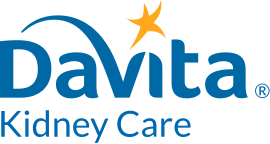The adult human body is made of more than 50 percent water and needs fluid to function properly. Most food naturally contains water, including fruits, vegetables, meat and bread. These foods are often not considered when tracking fluid intake. Beverages like water, coffee drinks, shakes, juice and soda are obvious sources of liquid. Ice, sherbet, gelatin and soup also count as fluid. Generally, anything that is liquid at room temperature is counted as part of the daily fluid allowance. People in the later stages of chronic kidney disease (CKD) should limit fluid intake because as kidney function is lost the kidneys can no longer remove excess fluid, which can lead to serious complications. If you have CKD, it’s important to recognize which foods to count as fluid to help improve or maintain your health.
Why people with CKD need to control fluid
Water is extremely important to your health but too much can create serious difficulties for patients whose kidneys are no longer able to remove excess fluid. For those living with CKD, having a limited ability to eliminate the fluid they take in can result in swelling of feet and legs, shortness of breath, additional strain on the heart, heart failure and fatigue. Your doctor and dietitian will provide you with a fluid-restricted diet unique to your needs to avoid these serious problems. In addition to this diet, daily monitoring of your weight and the use of prescribed diuretics (water pills) will keep you at a safe weight.
Kidney-friendly foods that count as fluid
Although most foods naturally contain water, the amount of fluid allowed refers only to liquids or foods like gelatin and ice that turn to liquid at room temperature. Here is a list of foods to consider when you’re counting fluid intake:
- Coffee and tea
- Gelatin
- Ice chips or cubes
- Ice cream
- Juice
- Milk and milk substitutes
- Popsicles
- Sherbet
- Soup
- Sorbet
Some fruits and vegetables contain large amounts of water, so excess intake can add a significant amount of fluid. Watermelon, for example, contains so much water that the recommended portion is only one small wedge, or about 1 cup.
Some kidney-friendly fruits and vegetables that contain fluid but don’t count as part of the fluid allowance include:
- Apples
- Blackberries
- Blueberries
- Broccoli
- Cabbage
- Carrots
- Cauliflower
- Celery
- Cherries
- Cranberries
- Cucumbers
- Eggplants
- Grapes
- Lettuce
- Peaches
- Pears
- Peppers
- Pineapple
- Plums
- Strawberries
- Tangerines
- Zucchini
How to control fluid
Patients have different fluid needs depending on their body size, medical condition and how much urine they make. Your doctor and renal dietitian will let you know how much liquid you should have each day and provide tips to help you manage thirst with a kidney-friendly diet. Here are some helpful tips:
- Avoid salty and spicy food. They increase thirst.
- Reduce or avoid salt, soy sauce and other high-sodium condiments.
- Plan ahead and spread your liquids throughout the day.
- Stay cool. Don’t overheat.
- Drink cold beverages instead of hot ones.
- Snack on cold kidney-friendly vegetables and fruits.
- Eat only the number of fruit and vegetable servings recommended in your meal plan.
- Sip beverages and use smaller cups.
- Make ice cubes out of your favorite beverage.
- Conquer dry mouth by brushing teeth, using mouthwash and sucking on hard candy or a lemon wedge.
- Take pills with very small sips of water, or try applesauce or other soft foods instead of water.
- Keep a daily food and fluid journal that includes your weight.
- Take your prescribed water pills.


